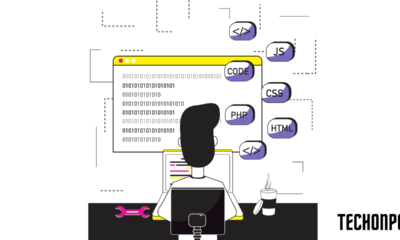Education
What is the Hybrid Work Model and What are the Advantages?
Published
3 years agoon
By
techonpc
What is the Hybrid Work Model and What are the Advantages
When the COVID-19 pandemic began in the spring of 2020, many businesses found it necessary to allow their employees to work remotely. Most employees that underwent this transition had positive comments about the experience, and the situation demonstrated that it is possible for numerous businesses to operate in this manner. In addition, definite advantages of working remotely became evident. Now that vaccine administration is widespread, companies and life, in general, are beginning to open, and businesses are considering options of working remotely or returning to workplaces. This has led to conversations about hybrid work models. But what exactly is a hybrid working model? Is this model realistic in addressing the structure of the workplace today?
A hybrid work model is a business work model that combines working remotely with being physically at work, i.e., in the office. This model provides freedom and flexibility for employees who perform their duties remotely some days of the workweek and are in the office during the other days. The employees can be in the workplace when they choose, within reason, and work remotely when they wish. Some employers may require employees to be in the office during days when there are important meetings. Some businesses also use the hybrid workforce model. Hybrid workforce meaning, having some employees working remotely, while others work in the office is another similar model used by lots of large corporations.
Setting up a hybrid work model for a business requires many considerations. The primary function of the office must be determined. Are there tasks that need completion in the office? Which procedures can employees accomplish remotely? These questions help businesses decide how much freedom to grant employees.
Before the pandemic, few employees envisioned working from home. Once the opportunity presented itself, many people enjoyed being able to work remotely. A recent survey indicated that 52% of employees prefer a hybrid work model. The critical question to ask is: are employees productive working from home? If so, then it makes sense to develop a work model that incorporates a certain amount of remote work and work in the office. Keeping people productive is an essential idea.
What are the specific advantages of a hybrid work model? There are many significant aspects of a work model that combines remote work with work in the office.
- Increased productivity. Most employees maintained a high level of productivity working remotely during the pandemic, which surprised some people. Indeed productivity should have decreased when employees worked from home due to distractions in that environment. However, in most cases, employee productivity remained at levels comparable to those obtained when working in the office.
- Employee Satisfaction and Happiness. Employees working remotely during the pandemic reported a high degree of satisfaction with their work and indicated that they felt happier than going to the office every day. The benefits of being close to loved ones and family pets contributed to the happiness. Being at home also allows employees to run errands as needed and perform various household tasks while also working. A potential disadvantage is that employees may feel distant from their colleagues while working remotely. Scheduling regular brief Zoom meetings can help in this situation. Adding in the component of working in the office to remote work ensures that employees do not feel isolated and provides a necessary amount of socialization.
- Cost Savings. Employees and employers benefit from remote work in terms of saving money. Employees make fewer trips to the physical office, which reduces the amount of money spent on gasoline and maintenance of their vehicles and potentially not buying lunches and coffee. Employers may save on office expenses associated with the presence of employees in the office.
- Flexibility for Your Business. When employees can work remotely, it provides a natural solution when it becomes necessary to suspend in-person work, such as during a pandemic or when physical issues affect the workplace.
Remote working has been successful during the pandemic. Employees have been productive and happy, employers and employees have saved money, and the new flexibility in work arrangements has been a winning situation. It makes sense to adopt a hybrid work model to continue these successes. No condition is perfect but using a hybrid work model provides flexibility while saving costs, and employee productivity and satisfaction are enhanced. It seems to be the best approach in the current business world. A hybrid work model is worth considering.
Follow Me

Unleashing the Power of the Office Accelerator: Maximizing Productivity and Efficiency in the Workplace with Office 365 Accelerator

Unlocking the Hidden Potential of Your Website: Strategies for Growth

From AI to VR: How Cutting-Edge Tech Is Reshaping Personal Injury Law in Chicago
Trending

 Microsoft4 years ago
Microsoft4 years agoMicrosoft Office 2016 Torrent With Product Keys (Free Download)

 Torrent4 years ago
Torrent4 years agoLes 15 Meilleurs Sites De Téléchargement Direct De Films 2020

 Money4 years ago
Money4 years ago25 Ways To Make Money Online

 Torrent4 years ago
Torrent4 years agoFL Studio 12 Crack Télécharger la version complète fissurée 2020

 Education3 years ago
Education3 years agoSignificado Dos Emojis Usado no WhatsApp

 Technology4 years ago
Technology4 years agoAvantages d’acheter FL Studio 12

 Technology4 years ago
Technology4 years agoDESKRIPSI DAN MANFAAT KURSUS PELATIHAN COREL DRAW

 Education3 years ago
Education3 years agoBest Steph Curry NBA 2K21 Build – How To Make Attribute, Badges and Animation On Steph Curry Build 2K21

You must be logged in to post a comment Login